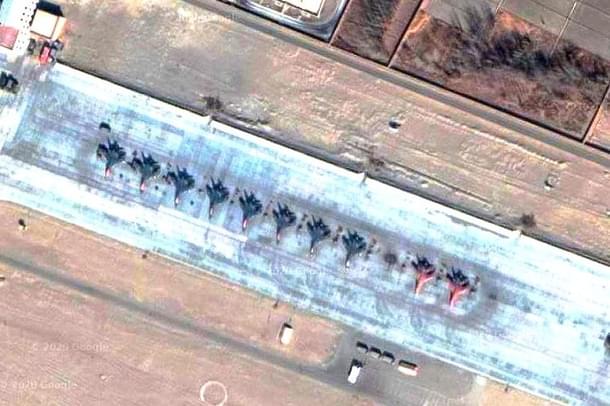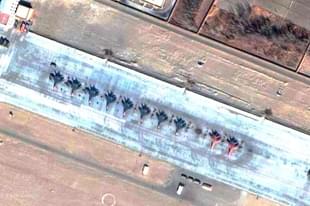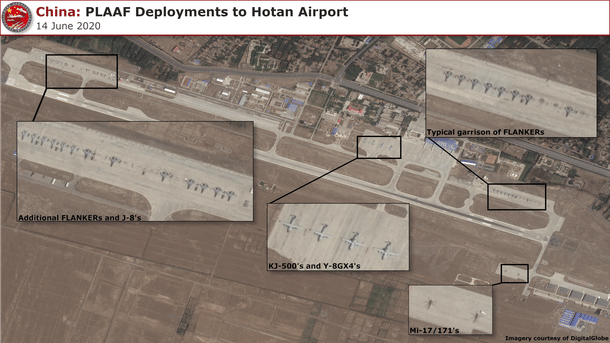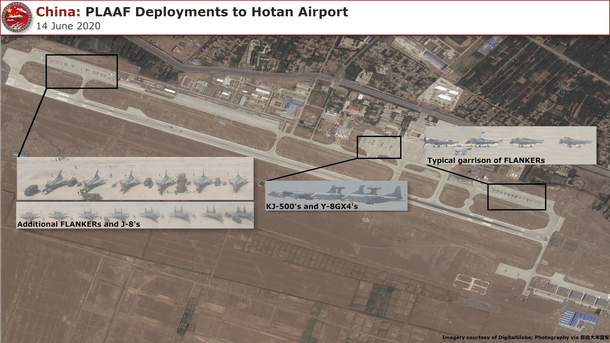Defence
Satellite Pictures Show China Is Increasing Deployment Of Fighters, Improving Infra At Its Air Bases Near Ladakh
Prakhar Gupta
Jul 02, 2020, 04:55 PM | Updated 04:54 PM IST
Save & read from anywhere!
Bookmark stories for easy access on any device or the Swarajya app.


Last week, after an IL-78 refueller of the People’s Liberation Army Air Force (PLAAF) landed at Pakistan’s Skardu Air Base in Gilgit-Baltistan, it was claimed that China had taken over bases of of the Pakistan Air Force for operations against India. While this may not have been accurate, satellite images show China has increased the presence of fighters at its own air bases in the region around Ladakh.
While PLAAF fighters and other Chinese air assets are deployed at some of these bases at all times, or at least during the summer months, the numbers have increased over the last few weeks due to the standoff in eastern Ladakh.
Increased Chinese air activity has been detected by the Indian Air Force (IAF) over Tibet, across the Line of Actual Control (LAC).
“During summer, there are usual exercises. But at this time, we have noticed more than usual deployment,” Chief of Air Staff Air Chief Marshal R K S Bhadauria has said.
China, reports say, may also have deployed Russian S-400 air defence missile system in the region, which India has also contracted for.
China’s increased fighter deployments in the region are visible at the Hotan Air Station, one of PLAAF’s major bases lying north of Ladakh in Xinjiang.
The PLAAF, according to Air University's China Aerospace Studies Institute (CASI), deploys around 12 unidentified variants of Flanker (Su-27) at its base in Hotan. An assessment published by CASI late last week, based on satellite images dated 14 June, says China has deployed “an additional 24 aircraft” at this airbase.

These 24 aircraft include 6 J-8s (possibly the J-8DF variant), 12 unidentified Flanker variants (possibly J-16s), two Y-8 electronic warfare aircraft, two KJ-500 early warning and control aircraft and two Mi-17 helicopters.

“The PLAAF also has the ability to command and control air operations in theater. Hotan is host of the PLAAF’s Hotan Command Post (和田指挥所). PLAAF command posts are division-level command elements that can provide command and control over air operations within a designated air space,” the CASI report reads.
In the middle of the ongoing standoff in eastern Ladakh, the Chinese air force is also upgrading infrastructure at its air bases in the region.
At the Ngari Gunsa airbase in Tibet, located just 200 kilometres away from Pangong Lake, new construction activity has been seen over the past few weeks.

Satellite images dated 15 May, posted by an open source intelligence handle on Twitter, show rapid construction in a large area parallel to the runway since April 2020. According to reports, it could be a “second taxi-track or a secondary tarmac”.
At least four PLAAF fighter jets, possibly J-11s or J-16s (domestically produced variants of the Russian Sukhoi 27), can be seen at the base.

This deployment at Ngari Gunsa was first seen in December 2019.
Reports say Chinese ‘fighter aircraft have been carrying out sorties from air bases in Hotan and Gargunsa and fly 30-35 kms from our territory in Ladakh’.
India has also deployed fighter jets and helicopters at its airbases in Ladakh and Kashmir to counter Chinese deployments in the region.
MiG-29s, Su-30s and Mirage-2000s fighters, along with the newly-acquired Apache attack helicopters, have been moved to bases in and around Leh.
IAF’s air refuellers and early warning aircraft have also been flying in the region to support the fighters and detect Chinese activity along the LAC.
Aircraft from IAF’s transport fleet have also been flying in and out of Leh and other air bases in the region, moving soldiers and equipment.
Prakhar Gupta is a senior editor at Swarajya. He tweets @prakharkgupta.




